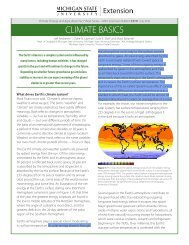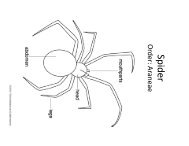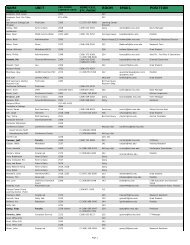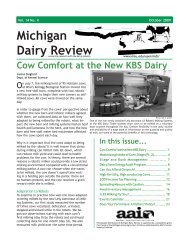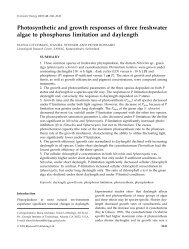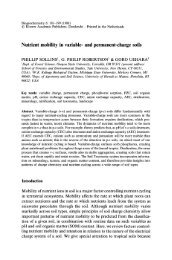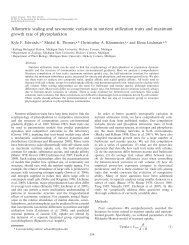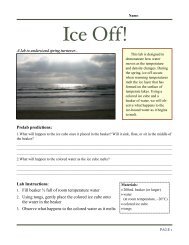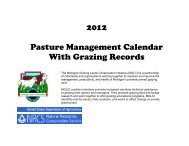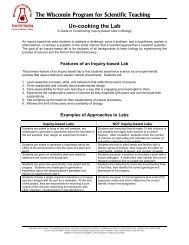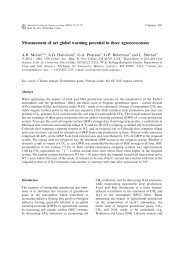Climate Change Threatens Polar Bear Populations
Climate Change Threatens Polar Bear Populations
Climate Change Threatens Polar Bear Populations
- No tags were found...
You also want an ePaper? Increase the reach of your titles
YUMPU automatically turns print PDFs into web optimized ePapers that Google loves.
October 2010 CLIMATE CHANGE AND POLAR BEARS2893climate-related variables (e.g., temperature) on anecological process (e.g., survival). If the process isrelated to population growth and the direction ofenvironmental change can be predicted, then a qualitativeprediction of the effect of climate change can beobtained.To go beyond such a qualitative prediction requiresinformation on the sensitivity of the entire life cycle (oras much of it as possible) to the environment, and aquantitative prediction of future environmental changes.In this paper, we obtained such a quantitative predictionby a novel approach to linking environment-dependentdemographic models to the output of GCMs. Thisapproach, which is applicable to other species, has threesteps. First, a life cycle model was parameterized as afunction of the environment, in this case, an index of seaice extent. Second, a stochastic demographic model wasdeveloped to compute population growth as a functionof environmental conditions and their fluctuations.Third, a forecast of environmental changes was extractedfrom GCM output. In our case, that forecast consistsof a time series of the frequency of poor ice conditions.This approach can be applied to other species andsituations (e.g., Jenouvrier et al. 2009). The discretizationof the environmental states, as we did here, avoidsthe need to extrapolate continuous relationships betweenthe environment and the vital rates beyond therange of observed conditions. This makes our predictionsof polar bear responses conservative, because nomatter how large Ice(t) becomes, the vital rates in themodel will be no worse than those observed during thepoor ice years of the study. However, given sufficientlydetailed information on both climate and the responseof vital rates, the analysis could use a continuousenvironment model (see Jenouvrier et al. 2009 for acomparison of discrete and continuous approaches).UncertaintiesManagement decisions must often be made in the faceof uncertainty, because information is limited andenvironments are variable. Therefore, where possible,analyses of climate effects should quantify the uncertaintyof the results on which management decisions arebased. This was particularly important in the listingdecision for the polar bear, and our analyses purposelyincluded several different kinds of uncertainty.Burnham and Anderson (2002) and Anderson (2007)have emphasized the importance of including modelselection uncertainty along with estimation uncertainty.Our parametric bootstrap distributions include bothtypes of uncertainty. We also recognize the uncertaintyinvolved in parametric specification of the ice-dependenceof the vital rates, and therefore analyzed bothnonparametric and parametric model sets. Althoughprojections based on the nonparametric model set,excluding parametric ice dependence, are conservativein the sense of yielding a weaker response to sea iceconditions, it is important to remember that theFIG. 8. Stochastic simulations of population growth underconditions predicted by 10 IPCC climate models. Area plotsshow the proportion of 10 000 simulations in which projectedpopulation size after t years increased or declined to a specifiedfraction of initial population size for (a) the parametric modelset and (b) the nonparametric model set. Simulations wereobtained as samples of 1000 from the bootstrap distribution ofparameter values, for each climate model.parametric model set is the one most well-supportedby the data. Both analyses lead to the same conclusions(Fig. 3).In addition, we used a series of deterministic andstochastic population models to assess potential populationresponse to changing ice conditions. The consistencyof results across this series of models strengthensour inference. Such a sequence is the only way toquantitatively assess the effects of different types ofuncertainty in assessment of population status andresponse to environmental conditions.Two aspects of the estimation procedures are worthdiscussing because they might have artificially reducedsurvival probabilities. One is harvest, which is not



